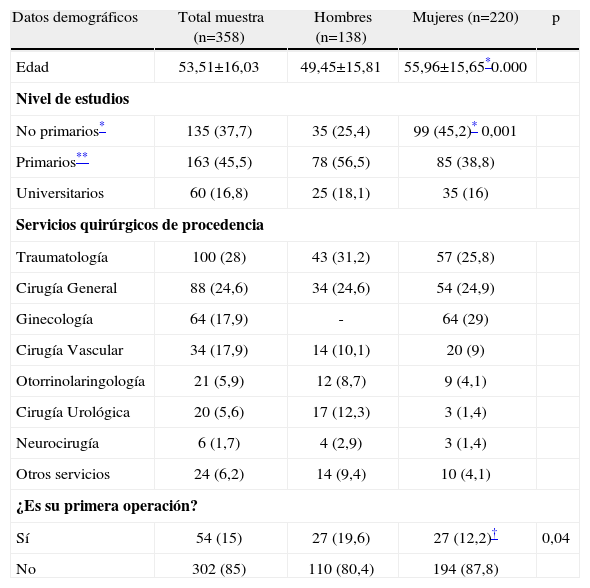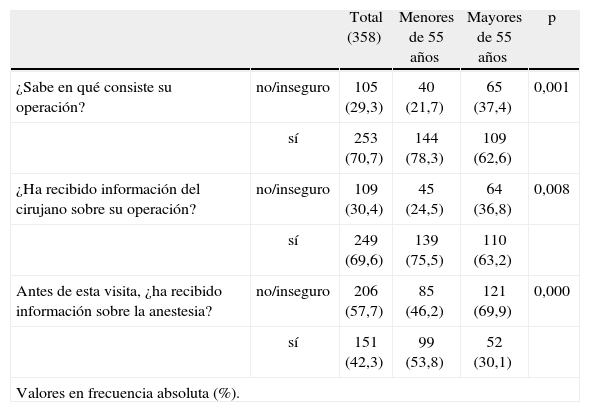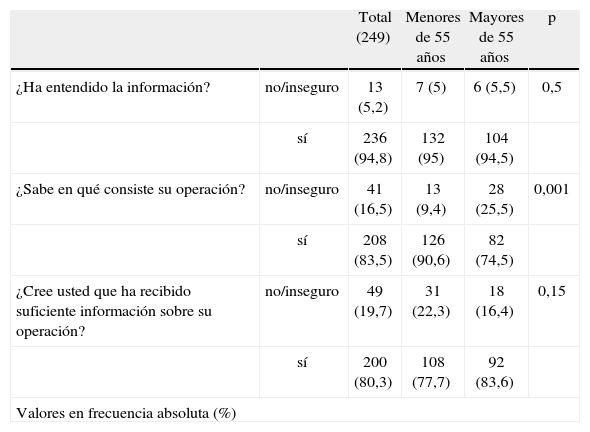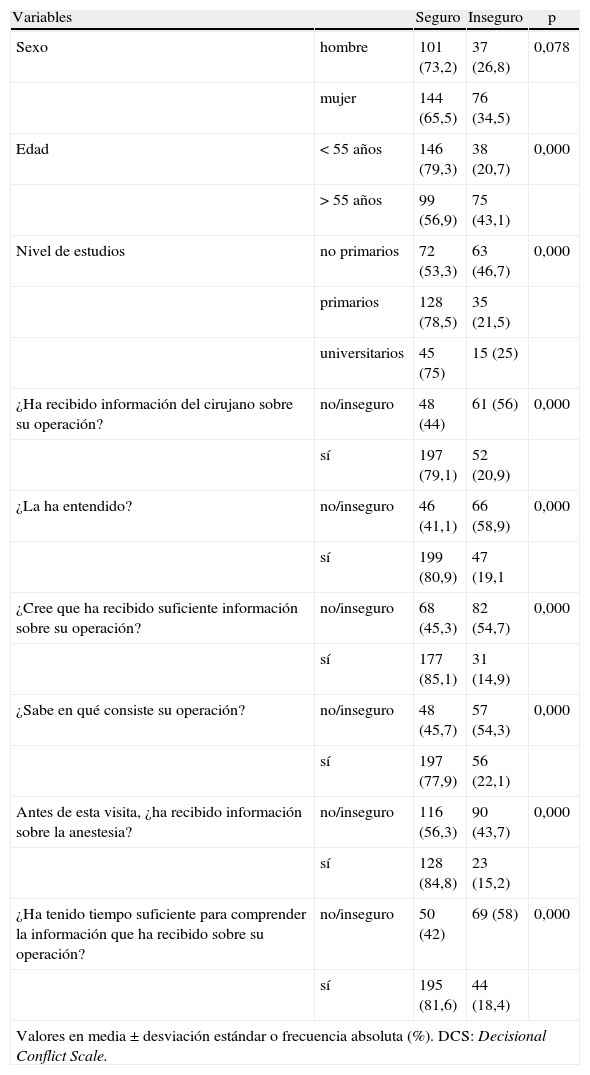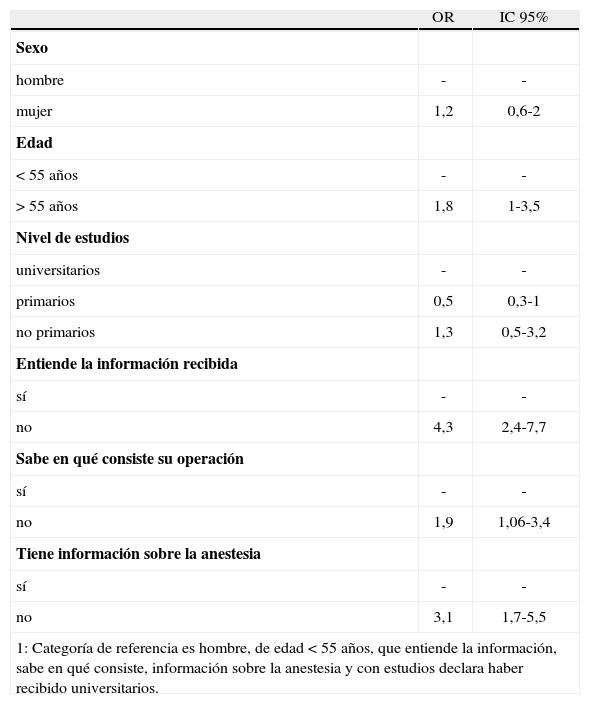Evaluar la seguridad mostrada por el paciente ante el proceso quirúrgico propuesto y su relación con la información previa recibida.
MétodoSe realizó un estudio transversal en el que se valoró la seguridad en la decisión de operarse del paciente mediante la “Decisional Conflict Scale” (DCS). Con un cuestionario estandarizado se obtuvo información sobre datos demográficos (edad, sexo y nivel de estudios) y sobre la información recibida relativa a la intervención quirúrgica. En función de la puntuación obtenida en la DCS, se clasificaron los pacientes en seguros e inseguros en su decisión de operarse. Se creó un modelo de regresión logística para ajustar posibles factores de confusión y analizar la seguridad con las variables relativas a la información recibida.
ResultadosSe incluyeron 358 pacientes. El 31,6% de pacientes mostraron inseguridad en la decisión tomada y un 30% manifestaron no haber recibido información. Los hombres más jóvenes, con nivel de estudios superior mostraron más seguridad en la decisión. La inseguridad del paciente guardó relación con la percepción de no haber recibido suficiente información previa (OR = 4,3; 95% IC = 2,4-7,7) ajustando por edad, sexo y nivel de estudios.
ConclusiónLa percepción de seguridad en la decisión del paciente está en clara relación con la comprensión de la información previa recibida. Los resultados obtenidos muestran la necesidad de mejorar la información que damos a los pacientes, principalmente en pacientes mayores y con bajo nivel de estudios.
To evaluate the certainty of patients deciding whether or not to undergo a proposed operation and the relationship between the degree of certainty and the prior information received.
MethodsA cross-sectional study was performed using the decisional conflict scale (DCS) to evaluate the degree of certainty of patients deciding to undergo surgery. A standardized questionnaire was used to obtain demographic data (age, sex, and level of education) and details about the information the patients had received regarding the surgical procedure. Patients were classified as certain or uncertain of their decision to undergo surgery according to the DCS score. A logistic regression model was constructed to adjust for confounding factors and to analyze the relationship between certainty and variables reflecting the information received by the patient.
ResultsA total of 358 patients were included. Thirty percent of the patients stated that they had not received prior information and 31.6% showed uncertainty in their decision. Younger men with a higher level of education felt more certain of their decision. After adjusting for age, sex, and level of education, we found that uncertainty was related to the perception of not having received enough prior information (odds ratio, 4.3; 95% confidence interval, 2.4-7.7).
ConclusionThe perception of certainty is clearly linked to patients’ understanding of prior information received. The results show a need to improve the information given to patients—particularly to elderly patients and those with a low level of education.








